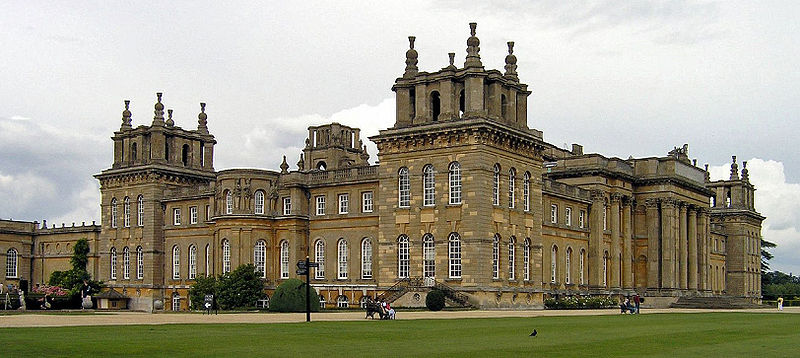Blenheim Palace
Blenheim Palace was a gift from Queen Anne to the first Duke of Marlborough. He was the military commander who led the Allied forces in battle against the French forces in August 1704. He personally received the surrender of Marshall Talland, leader of the French forces. The Duke also ensured that the Palace became a monument to Queen Anne. The Queen and a grateful nation granted to the Marlboroughs, the Manor of Woodstock and the promise of the funds needed to build such a house.
The actual building of the Palace was not trouble free. The first problem was that the Duchess did not want such a grand residence. She hoped for a smaller country house designed for comfort first and status second. She had many arguments with the architect Vanbrugh until Vanbrugh resigned. Sarah, the First Duchess, being a strong willed woman, unfortunately fell out of favour with the Queen. Court intrigue made the most of this and for a short while the Marlboroughs even left the country. The second problem was that Royal funds for the Palace consequently dried up. Building of the Palace came to a halt in the summer of 1712. Eventually the Palace was completed at the Duke’s own expense.
Subsequent Dukes of Marlborough have all contributed to the development of this large estate. Winston Churchill, grandson of the 7th Duke of Marlborough, was born here and spent much time at the palace. Read more here.
The actual building of the Palace was not trouble free. The first problem was that the Duchess did not want such a grand residence. She hoped for a smaller country house designed for comfort first and status second. She had many arguments with the architect Vanbrugh until Vanbrugh resigned. Sarah, the First Duchess, being a strong willed woman, unfortunately fell out of favour with the Queen. Court intrigue made the most of this and for a short while the Marlboroughs even left the country. The second problem was that Royal funds for the Palace consequently dried up. Building of the Palace came to a halt in the summer of 1712. Eventually the Palace was completed at the Duke’s own expense.
Subsequent Dukes of Marlborough have all contributed to the development of this large estate. Winston Churchill, grandson of the 7th Duke of Marlborough, was born here and spent much time at the palace. Read more here.
